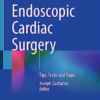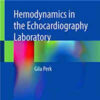A Novel Negative Pressure-Flow Waveform to Ventilate Lungs for Normothermic Ex Vivo Lung Perfusion
journals.lww.com
Ex vivo lung perfusion (EVLP) is increasingly used to treat and assess lungs before transplant. Minimizing ventilator induced lung injury (VILI) during EVLP is an important clinical need, and negative pressure ventilation (NPV) may reduce VILI compared with conventional positive pressure ventilation (PPV). However, it is not clear if NPV is intrinsically lung protective or if differences in respiratory pressure-flow waveforms are responsible for reduced VILI during NPV.
In this study, we quantified lung injury using novel pressure-flow waveforms during normothermic EVLP. Rat lungs were ventilated-perfused ex vivo for 2 hours using tidal volume, positive end-expiratory pressure (PEEP), and respiratory rate matched PPV or NPV protocols. Airway pressures and flow rates were measured in real time and lungs were assessed for changes in compliance, pulmonary vascular resistance, oxygenation, edema, and cytokine secretion.
Negative pressure ventilation lungs demonstrated reduced proinflammatory cytokine secretion, reduced weight gain, and reduced pulmonary vascular resistance (p < 0.05). Compliance was higher in NPV lungs (p < 0.05), and there was no difference in oxygenation between the two groups. Respiratory pressure-flow waveforms during NPV and PPV were significantly different (p < 0.05), especially during the inspiratory phase, where the NPV group exhibited rapid time-dependent changes in pressure and airflow whereas the PPV group exhibited slower changes in airflow/pressures. Lungs ventilated with PPV also had a greater transpulmonary pressure (p < 0.05). Greater improvement in lung function during NPV EVLP may be caused by favorable airflow patterns and/or pressure dynamics, which may better mimic human respiratory patterns.















